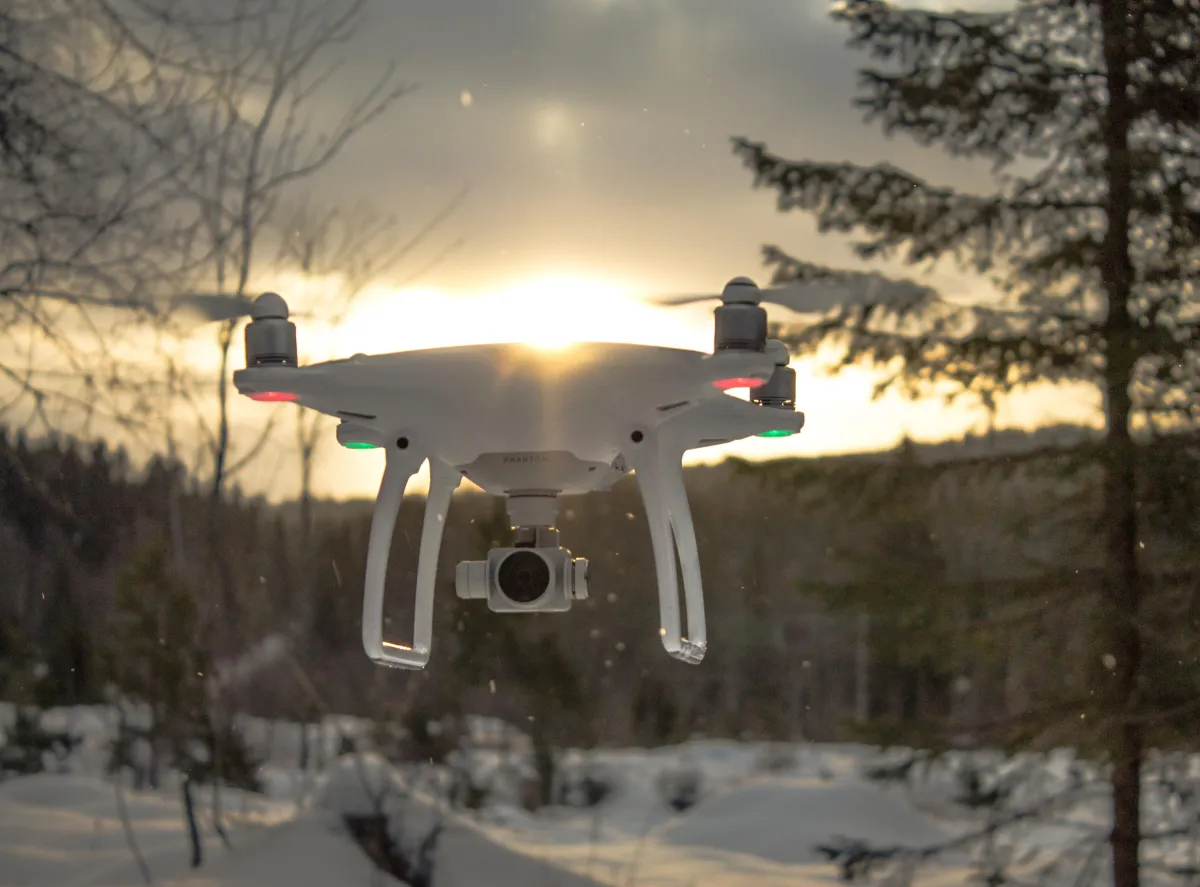
Phantom Drones: Aerial Adventures and Precision Technology
Hey there, fellow drone enthusiasts! Are you ready to dive into the captivating world of Phantom drones? If you're seeking an unforgettable adventure that defies gravity, you've come to the right place. In this article, I'm your guide, your advisor, and your partner-in-crime as we navigate the skies with these incredible pieces of technology.
Introduction: The Allure of Phantom Drones
Imagine having the power to defy gravity and capture breathtaking vistas from a bird's-eye view. Phantom drones grant us the incredible ability to explore the world from a unique perspective, turning our dreams of flight into reality. As a passionate drone enthusiast, I'm here to guide you through every step of your journey.
Unveiling the Phantom Series: Unmatched Performance and Precision
The Phantom series from renowned drone manufacturer DJI has garnered global acclaim for its exceptional performance and precision engineering. These drones are more than mere gadgets; they're portals to adventure. With features like stabilized 4K cameras, intelligent flight modes, and robust build quality, the Phantom series is designed to elevate your aerial escapades to new heights.
Choosing Your Phantom: A Buyer's Guide
Factors to Consider
Selecting the perfect Phantom drone for your needs requires careful consideration. Budget, intended use, and experience level are crucial factors that will influence your decision. Are you a novice pilot eager to explore, or an experienced flyer seeking advanced capabilities?
Comparing Phantom Models
The Phantom series provides an array of models tailored to specific preferences. Whether it's the remarkable camera features of the Phantom 4 Pro V2.0 or the Phantom 4 RTK's dedicated mapping and surveying capabilities, there's an option for every need.
Phantom 4 Pro V2.0
With its impressive 1-inch CMOS sensor, this camera captures awe-inspiring 4K/60fps videos and striking 20MP photos. The inclusion of a mechanical shutter guarantees distortion-free imagery, while the f/2.8 wide-angle lens preserves exceptional sharpness and color precision. Dive into the world of cinematic storytelling in mesmerizing 4K at 100 Mbps, harnessing the power of the D-Log mode and H.265 codec to amplify dynamic range.
Keep a vigilant eye on battery health and longevity through the intuitive DJI GO 4 app. The advanced battery management system is designed to prevent overcharging and over-draining, safeguarding the longevity of your battery. Remarkably, even during storage, the batteries gradually discharge power to uphold their overall health.
Stabilization – 3-axis gimbal
Max flight time – 30 mins
Max range – 6 miles
5-direction obstacle sensing system
Intelligent flight modes – ActiveTrack, Return to Home, TapFly, Draw mode, and Gesture mode
You can select between controller options: The standard RC controller can be paired with your mobile device, or you can choose the remote controller with the 5.5-inch built-in screen.
The 5.5-inch screen boasts ultra-brightness, ensuring vibrant colors remain visible even under direct sunlight. With the DJI GO 4 app integrated into the screen, you can operate without the need for a mobile device, streamlining the process. Equipped with various ports and a battery life of five hours, the remote controller transforms the Phantom 4 Pro V2.0 into a complete aerial imaging solution.
Phantom 4 RTK
Integrating real-time centimeter-level positioning data, the Phantom 4 RTK ensures enhanced image metadata accuracy. It supports PPK via DJI Cloud PPK Service and adapts to D-RTK 2 Mobile Station or NTRIP for diverse workflows.
TimeSync aligns the flight controller, camera, and RTK module, ensuring each photo boasts accurate metadata and centimeter-level positioning data. Featuring a 1-inch, 20MP CMOS sensor and mechanical shutter, the Phantom 4 RTK captures impeccable data. High resolution achieves 2.74 cm GSD at 100 meters, with lens calibration for unique adjustments.
Utilize the DJI GS RTK app and Remote Controller's integrated screen for intelligent control and streamlined planning, supporting various modes including Photogrammetry and Waypoint Flight. The GS RTK app and versatile RTK data collection methods make the Phantom 4 RTK a complete surveying and mapping solution.
Stabilization – 3-axis gimbal
Max flight time – 30 mins
Max range – 4.3 miles
Intelligent flight modes - Photogrammetry (2D and 3D), Waypoint Flight, Terrain Awareness, Block Segmentation, and more.
Pre-flight Preparations: Setting Up for Success
Assembling Your Drone
Before your maiden flight, it's essential to properly assemble your Phantom drone. Connect propellers and ensure everything fits snugly. A solid foundation sets the stage for safe and enjoyable flights.
Calibration and Firmware Updates
Calibrating your drone's compass and IMU (inertial measurement unit) is vital for accurate navigation. Additionally, regularly updating firmware via DJI Assistant 2 guarantees access to the latest features and improvements.
Understanding the Remote Controller
Mastering the remote controller is key to smooth flights. Familiarize yourself with joysticks, buttons, and switches. Practice makes perfect; soon, you'll be piloting with finesse.
Taking Flight: Mastering the Art of Drone Piloting
Basic Controls and Maneuvers
Now that you've set up your Phantom drone, it's time to take the controls. Learning the basics is essential: how to ascend, descend, rotate, and tilt. Start with open spaces to gain confidence before venturing into more challenging environments.
Exploring Flight Modes of Phantom Drones
The Phantom series offers an array of flight modes designed to enhance your experience.
Return to Home when activated, the drone automatically returns to its takeoff location, ensuring a safe return even if the connection is lost or the battery is low
TapFly mode allows you to tap on a location on the screen, and the drone autonomously flies to that point, enabling easy navigation without manual control
ActiveTrack mode tracks your movements or objects
Gesture mode permits you to control the drone's movements using hand gestures, adding a touch of interactivity and convenience to your flying experience
Draw mode lets you pre-program flight paths. Experimenting with these modes will unlock new dimensions of exploration.
Capturing Breathtaking Aerial Shots
Unleash your creative side as you capture stunning aerial photographs and videos. The stabilized camera provides smooth footage, and adjusting settings like shutter speed and ISO allows you to tailor your shots to perfection.
Safety First: Navigating Regulations and Best Practices
Legal Considerations for Drone Flying
As a responsible drone pilot, adhering to local regulations is crucial. Register your drone at faa.gov, fly within designated areas, and respect privacy laws. Familiarize yourself with no-fly zones and airspace restrictions to avoid unnecessary legal complications.
Safety Guidelines
Safety should always be your top priority. Fly in optimal weather conditions, maintain line of sight, and keep your drone away from people, animals, and obstacles. In case of emergencies, knowing how to perform a manual landing is invaluable.
Maintaining Your Investment: Phantom Drone Care and Maintenance
Cleaning and Storage
Regular maintenance ensures your Phantom drone's longevity. After each flight, gently clean the propellers and body to remove dirt and debris. Store your drone in a cool, dry place to prevent any damage from humidity.
Battery and Component Care
Your drone's battery is its lifeblood. Follow proper charging and discharging practices to extend its lifespan. Inspect other components for wear and tear, replacing any damaged parts promptly.
Pushing Boundaries: Creative Applications of Phantom Drones
Aerial Photography and Videography
The skies are your canvas. Experiment with different angles, perspectives, and compositions to capture breathtaking shots. Use the drone's camera to tell compelling visual stories that leave a lasting impact.
Related read: Best Drones for Real Estate, 4K Camera Drones, and Best Follow Me Drones
Mapping and Surveying
Phantom drones aren't just for recreation. They find valuable applications in industries like agriculture and construction, aiding in mapping and surveying large areas efficiently.
Search and Rescue Operations
In emergencies, drones equipped with thermal cameras can aid in search and rescue operations, helping locate missing persons or navigating hazardous environments.
Learn how the Phantom 4 RTK is employed for topographic mapping of coastal regions at copernicus.org, and explore disaster management applications at sciencedirect.com.
Troubleshooting 101: Common Issues and Solutions
GPS and Signal Problems
GPS and signal issues can disrupt your flights. Ensure you're flying in an area with clear satellite reception, and calibrate your drone's compass regularly to minimize these problems.
Drone Won't Take Off? Let's Fix That
If your drone refuses to take off, check for obstacles obstructing the propellers and ensure proper calibration. Also, examine the battery's charge level and connectivity to the remote controller.
Conclusion: Your Skyward Journey Begins Now
And there you have it, fellow adventurers! With your Phantom drone in hand and the knowledge I've shared, you're equipped to embark on an exhilarating journey through the skies. Remember, every flight is a chance to create memories, capture beauty, and push your boundaries. So spread those wings, explore uncharted horizons, and let the world below marvel at your aerial prowess.
FAQs - Unleash Your Inner Drone Pilot
1. How much experience do I need to start flying a Phantom drone?
Getting started with a Phantom drone is beginner-friendly, but some basic understanding of remote control systems is helpful. Practice in open spaces before attempting complex maneuvers.
2. Are Phantom drones legal to fly anywhere?
No, they aren't. Be sure to research local regulations and restrictions before taking a flight. Respect privacy and adhere to no-fly zones and airspace rules.
3. Can I fly my drone in windy conditions?
It's best to avoid flying in strong winds, as it can affect stability and control. Stick to calm weather conditions for safer flights and smoother footage.
4. How can I extend my drone's battery life?
Fly in optimal weather, avoid aggressive maneuvers, and maintain a steady altitude. Also, ensure your battery is stored at around 50% charge when not in use for extended periods.
5. What's the future of Phantom drones?
As technology advances, expect improved AI capabilities, longer flight times, and expanded creative features. The sky's the limit!
Remember, each flight is an opportunity to explore, create, and learn. Embrace the journey and happy flying!

Copyright © Drone Guide Central - All Rights Reserved 2024

